#Strasbourg Dancing Fever
Text

#doge#Strasbourg Dancing Fever#Dancing plague of 1518#le C&C music factory has arrived#le gonna make you sweat has arrived
69 notes
·
View notes
Text
I'm this close 🤏 to developing that hysteria-induced dance fever that killed between 50 and 400 people in Strasbourg, Alsace in 1518 except it won't be dancing it'd be screaming running in circles and tearing my skin off with my bare hands
8 notes
·
View notes
Text
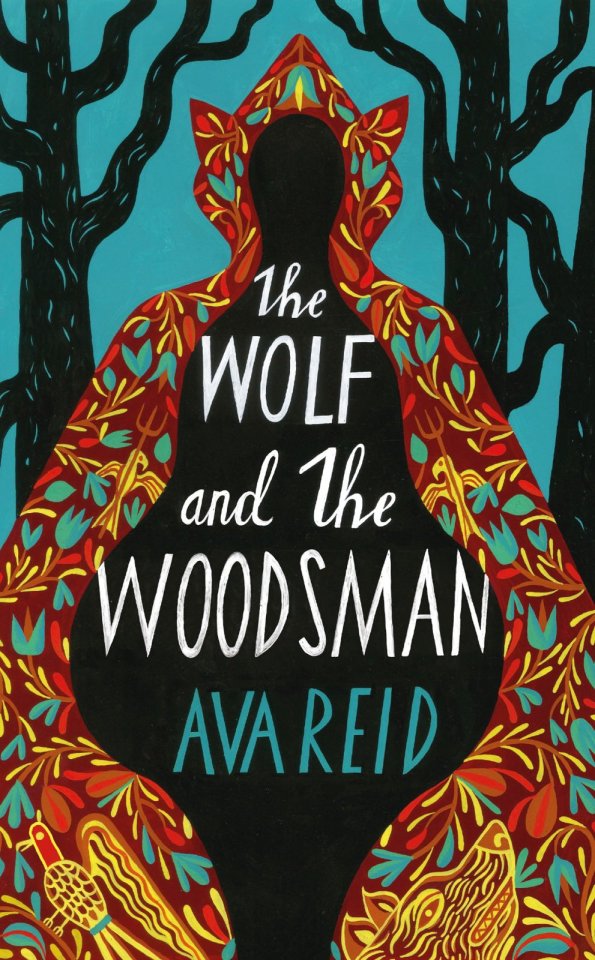
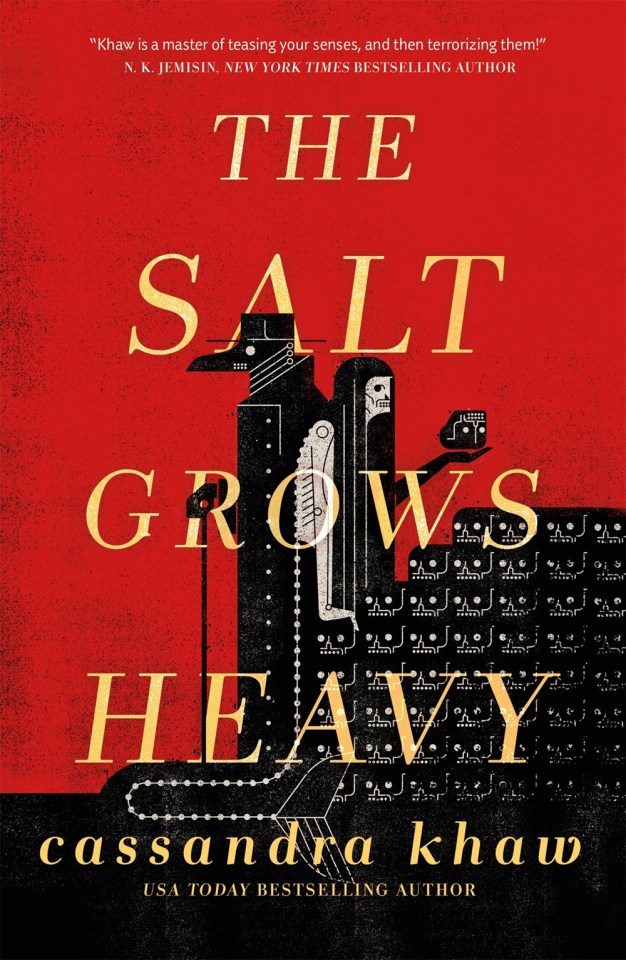
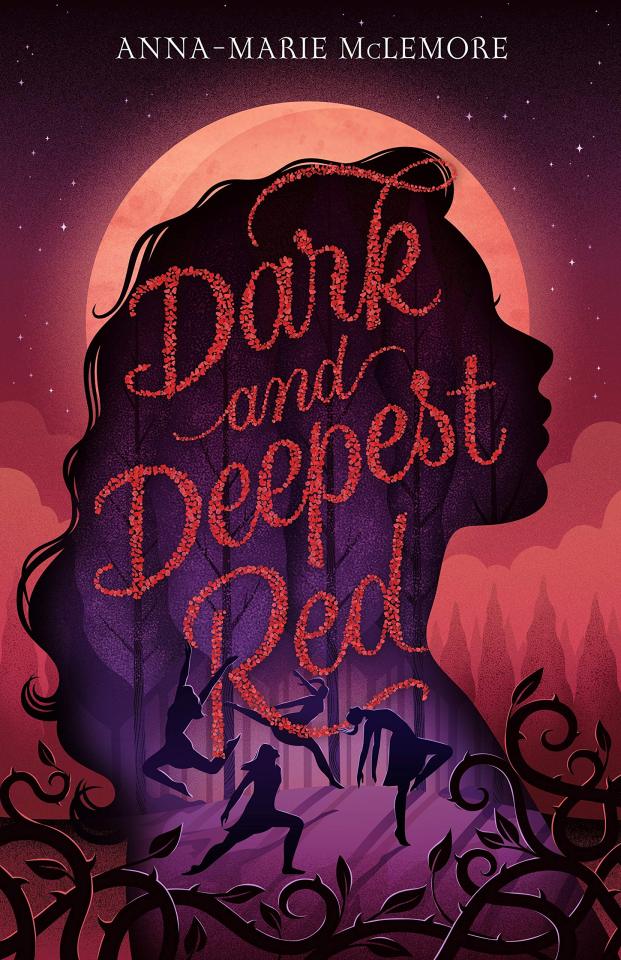

Twisted Fairy Tale Retelling Picks
The Wolf and the Woodsman by Ava Reid
In her forest-veiled pagan village, Évike is the only woman without power, making her an outcast clearly abandoned by the gods. The villagers blame her corrupted bloodline—her father was a Yehuli man, one of the much-loathed servants of the fanatical king. When soldiers arrive from the Holy Order of Woodsmen to claim a pagan girl for the king’s blood sacrifice, Évike is betrayed by her fellow villagers and surrendered.
But when monsters attack the Woodsmen and their captive en route, slaughtering everyone but Évike and the cold, one-eyed captain, they have no choice but to rely on each other. Except he’s no ordinary Woodsman—he’s the disgraced prince, Gáspár Bárány, whose father needs pagan magic to consolidate his power. Gáspár fears that his cruelly zealous brother plans to seize the throne and instigate a violent reign that would damn the pagans and the Yehuli alike. As the son of a reviled foreign queen, Gáspár understands what it’s like to be an outcast, and he and Évike make a tenuous pact to stop his brother.
As their mission takes them from the bitter northern tundra to the smog-choked capital, their mutual loathing slowly turns to affection, bound by a shared history of alienation and oppression. However, trust can easily turn to betrayal, and as Évike reconnects with her estranged father and discovers her own hidden magic, she and Gáspár need to decide whose side they’re on, and what they’re willing to give up for a nation that never cared for them at all.
The Salt Grows Heavy by Cassandra Khaw
You may think you know how the fairytale goes: a mermaid comes to shore and weds the prince. But what the fables forget is that mermaids have teeth. And now, her daughters have devoured the kingdom and burned it to ashes.
On the run, the mermaid is joined by a mysterious plague doctor with a darkness of their own. Deep in the eerie, snow-crusted forest, the pair stumble upon a village of ageless children who thirst for blood, and the three 'saints' who control them.
The mermaid and her doctor must embrace the cruellest parts of their true nature if they hope to survive.
Dark and Deepest Red by Anna-Marie McLemore
Summer, 1518. A strange sickness sweeps through Strasbourg: women dance in the streets, some until they fall down dead. As rumors of witchcraft spread, suspicion turns toward Lavinia and her family, and Lavinia may have to do the unimaginable to save herself and everyone she loves.
Five centuries later, a pair of red shoes seal to Rosella Oliva’s feet, making her dance uncontrollably. They draw her toward a boy who knows the dancing fever’s history better than anyone: Emil, whose family was blamed for the fever five hundred years ago. But there’s more to what happened in 1518 than even Emil knows, and discovering the truth may decide whether Rosella survives the red shoes.
The Crane Husband by Kelly Barnhill
“Mothers fly away like migrating birds. This is why farmers have daughters.”
A fifteen-year-old teenager is the backbone of her small Midwestern family, budgeting the household finances and raising her younger brother while her mom, a talented artist, weaves beautiful tapestries. For six years, it’s been just the three of them—her mom has brought home guests at times, but none have ever stayed.
Yet when her mom brings home a six-foot tall crane with a menacing air, the girl is powerless to prevent her mom letting the intruder into her heart, and her children’s lives. Utterly enchanted and numb to his sharp edges, her mom abandons the world around her to weave the masterpiece the crane demands.
In this stunning contemporary retelling of “The Crane Wife” by the Newbery Medal-winning author of The Girl Who Drank the Moon, one fiercely pragmatic teen forced to grow up faster than was fair will do whatever it takes to protect her family—and change the story.
#fairy tale retelling#fantasy#mythology#reading recommendations#reading recs#book recommendations#book recs#library books#tbr#tbr pile#to read#booklr#book tumblr#book blog#library blog#readers advisory
15 notes
·
View notes
Photo

Title: Dark and Deepest Red
Author: Anna-Marie McLemore
Series or standalone: standalone
Publication year: 2020
Genres: fiction, fantasy, historical fiction, LGBT+, retelling, magical realism
Blurb: In the summer of 1518, a strange sickness sweeps through Strasbourg: women dance in the streets, some until they fall down dead. As rumours of witchcraft spread, suspicion turns toward Lavinia and her family...and Lavinia may have to do the unimaginable to save herself and everyone she loves. Five centuries later, a pair of red shoes seal to Rosella Oliva’s feet, making her dance uncontrollably. They draw her toward a boy who knows the dancing fever’s history better than anyone: Emil, whose family was blamed for the fever five hundred years ago. But there’s more to what happened in 1518 than even Emil knows, and discovering the truth may decide whether Rosella survives the red shoes.
#dark and deepest red#anna marie mclemore#standalone#2020#fiction#fantasy#historical fiction#lgbt#retelling#magical realism
2 notes
·
View notes
Text
The Medieval Dancing Plague of St. Vitus Dance
Read the new LOST IN HISTORY post on the Dancing Plague.
The Dancing Plague of Strasbourg in 1518
Five hundred years ago, during a hot July in the French city of Strasbourg, a strange mania seized its people. Hundreds of citizens became compelled to dance uncontrollably in the streets – for no apparent reason. This collective “dance fever” lasted for WEEKS. That is, until they collapsed from exhaustion, unconsciousness or, in some cases, even death.…

View On WordPress
1 note
·
View note
Text
guys its 1518, lets join the dance party

3 notes
·
View notes
Text
Dark and Deepest Red - Anna-Marie McLemore

Magical realism that combines The Red Shoes fairy tale with the historical dancing plague of Strasbourg, 1518.
Lala just wants to live a peaceful life with her aunt and the boy she loves without fear of being driven from their home once again. When a strange and unexplained dancing fever takes hold of their village, she knows she must do everything she can to keep her Romani identity a secret, or she'll end up being blamed and burned as a witch.
In the present day town of Briar Meadows, everyone knows that strange things happen in the fall when the 'glimmer' arrives. It's usually harmless, and it never lasts. But this year, when everyone is wearing red shoes that inspire boldness in life and love, Rosella experiences a darker side of the magic. Her shoes force her to dance. And she cannot take them off.
Her friend Emil must dig into his Romani heritage to find an unexpected connection to one of his ancestors in order to help Rosella before the red shoes do irreversible damage.
The writing is lyrical and metaphorical and beautiful. I thought the story dragged a bit in the middle, but overall I loved how the two storylines tied together, and the ending was perfect!
More fairy tales
#dark and deepest red#anna-marie mclemore#fiction#historical fiction#fantasy#magical realism#fairytales#the red shoes#bookrecs
5 notes
·
View notes
Text
pre-split Panic! at the Disco playlists
update from summer 2022: ok hi I just realized I had left a bunch of stuff unfinished here... it’s like 60% done and I’ll straighten up this post soon(ish) hopefully!
the bold playlists are mostly interviews instead of performances
Fever era (2005-2006)
the main stuff up until May 2006 (it’s relatively in order. check the description for more)
Truckstops & Statelines Tour
their first headlining tour
Bamboozle (the description has highlights from other May festivals)
summer tour + favorites
Brendon covers Britney Spears
HMV signing & performance
mid-2006 interviews & extra appearances
August shows after the summer tour: Lollapalooza, Highfield, Pukkelpop, Lowlands, Wolverhampton, Bush Hall, Reading & Leeds
2006 VMAs
New Zealand
October interviews from Australia & NZ
(I’m still figuring out how to group this misc one)
October interviews from Europe
October in Europe: Copenhagen, Vienna, Hamburg, Amsterdam, Belgium, Brixton, Cologne, Strasbourg, Lyon, Paris
November – December 2006
Nothing Rhymes With Circus
Mexico
2007
Atlanta
Brendon & Ryan with Mark Hoppus
Brendon’s solo piano cover of Round Here
Summerfest + the new song
Virgin Fest
Decaydance Fest
the Reading performance is here
Bumbershoot
the fall 2007 version of Camisado with Roxanne
Street Scene
2007 interviews & misc stuff
Fall Out Boy dressed as P!ATD for Halloween
Pretty. Odd. era (2008)
PATD talking about the Pretty. Odd. songs
Nine in the Afternoon
the 2008 Honda Civic Tour announcement
filming That Green Gentleman
January – April 2008 (outside of tour)
European spring tour
offstage videos from Europe
HMV acoustic set on March 17th
AOL Sessions
Honda Civic Tour + favorites from that tour
Honda Civic Tour offstage (check the description for more)
summer European shows: Southside, 1LIVE Radio Concert, Tivoli, NRJ, Furia, Bochum, Frankfurt, Virgin Show, Main Square, Southampton, Astoria, U18, Oxegen, T in the Park (the other shows are here)
misc summer 2008 (Europe, Asia, Australia)
other shows in Asia: MTV Asia Awards, Singapore, Malaysia, the Philippines
Australia & New Zealand
September 2008
fall 2008
Voodoo Fest
the Halloween show
Rock Band Live Tour + favorites from that tour + Bden drumming
bonus: Brendon’s solo acoustic version of Time to Dance
2009
the Estero show
the rest of 2009
OTHER PLAYLISTS (all of these videos are also in lists above)
interviews
the band offstage
professionally recorded performances
acoustic performances (outside of a regular show)
song covers
the guys onstage & offstage
this site was created by a mod from the old PATD boards who collected video files that fans shared, so it’s a great resource for some full shows!
I’m still working on transferring stuff to this youtube account, but everything will fall into the playlists above. A couple lists are temporarily private. I’m adding one video at a time and a lot of my old playlists look like this, so it’s been slow trying to figure out what other versions of videos might still be elsewhere on youtube vs what I should upload. Some of the content that I think I’m missing is listed here.
other posts: INFO + PICTURE TAGS
37 notes
·
View notes
Text
2021 Reading Log, pt 5

21. Emperors of the Deep by William McKeever. The worst book I have finished this year. The first two-thirds of it were just annoying enough to make it slightly unpleasant—there’s lots of interesting information about sharks in the book, but it’s muddied by the author’s overuse of metaphor and poor word choices (“species” has an actual meaning my dude). And then it gets racist. Phenomenally racist. The entire trade in shark meat and shark fins is blamed solely on China, in between statistics about actual shark use throughout the world. Spain and Brazil have major shark fisheries. The USA has a multimillion dollar black market in illegal shark fins. The amount of shark fins consumed annually in China is currently decreasing. The book actually says all this in one breath, and then condemns China, and occasionally “other Asian countries” in the next breath. Gross.

22. Big Chicken by Maryn McKenna. This was the book I was hoping The Secret Life of Groceries would be. It’s an expose on the abuses of the food industry, and how things are improving. It zooms in specifically on chicken production, and the enormous use of antibiotics for growth promotion that has been used since the 1950s, and only recently forbidden by law in the USA. McKenna’s typical beat is disease, and she does an excellent job of tracing the history of antibiotic resistance evolution. The book was published in 2017, and ends on a hopeful note. As well it should, as the chicken industry has been pretty good about phasing out routine antibiotic use. Too bad the beef and pork industries have actually increased antibiotic use in the last several years…

23. The Dancing Plague by John Waller. This book focuses primarily on the Dancing Plague in Strasbourg in 1518, but talks about other outbreaks of similar psychogenic illness in the Middle Ages. The introduction ends with, “this is the story of how a town lost hope”, which is a big mood. Especially why. Strasbourg was hit by multiple epidemics and famines in a short time, had massive rates of poverty, and predatory monasteries and lords profited off of what food the people grew. The author argues that the manifestation of a dancing plague specifically was a local cultural phenomenon, tied to saints’ cults in the Rhine River Valley and the combination of deep piety and deep distrust of the clergy. This was a breezy read, and I finished it in a single sitting.

24. Proof: The Science of Booze by Adam Rogers. I dunno if this is the “Best Science Writing of 2014”, as the paperback’s back cover crows, but it was very pleasant. The organization of the book is inspired, running through first the process of making alcohol (yeast, sugar, fermentation, distillation, aging) and then the process of drinking it (smell and taste, body and brain, hangover). The author is clearly a huge geek about this kind of thing, and his love of the material shines through. Obviously, this is a pretty pro-alcohol book, so if you have triggers about that sort of thing, it is not recommended, but I found it a very pleasant read (especially with a cocktail).

25. Bitten by Witch Fever by Lucinda Hawksley. This is a very macabre art book, consisting as it does of reproductions of Victorian wallpapers tested and found to contain arsenic. The plates are interleafed with essays about the role of arsenic in the Victorian home, the conditions in Victorian textile factories, histories of some of the designers, and the debate over whether arsenic in wallpaper was really dangerous (which is where the title comes from—apparently people have been using the “witch hunt” analogy to describe legitimate complaints that they are on the wrong side of for 150+ years now). These pages are in smaller format than the wallpaper reproductions, giving the book a strange, lopsided feeling in the hand. The font is also a downside, as there are ligatures between some letter combinations (like ct and st) that rubbed me the wrong way.
53 notes
·
View notes
Text

Rating: ⭐️⭐️⭐️
“Summer, 1518. A strange sickness sweeps through Strasbourg: women dance in the streets, some until they fall down dead. As rumors of witchcraft spread, suspicion turns toward Lavinia and her family, and Lavinia may have to do the unimaginable to save herself and everyone she loves.
Five centuries later, a pair of red shoes seal to Rosella Oliva’s feet, making her dance uncontrollably. They draw her toward a boy who knows the dancing fever’s history better than anyone: Emil, whose family was blamed for the fever five hundred years ago. But there’s more to what happened in 1518 than even Emil knows, and discovering the truth may decide whether Rosella survives the red shoes.”
I picked this randomly on audiobook and thought it was just okay and nothing memorable. I liked Lala as a character. This is told in multi point of view and really enjoyed that. I really liked the historical fiction aspect of this book.
3 notes
·
View notes
Text
Word of Art: Tarantism
Tarantism (n.): a psychological condition characterized by an irresistible urge to dance, prevalent in Southern Italy from the 15th through the 17th century and popularly attributed to the bite of a tarantula.
In July of 1518, a woman known as Frau Troffea wordlessly stepped out of her Strasbourg home and began to dance in the blazing summer heat. There was no music, nobody accompanied her, and her face showed no trace of joy. Nobody knew why she was dancing, but she kept at it for days on end, pausing only for a few minutes at a time to eat and drink.
Frau Troffea’s bizarre behavior marked the beginning of a dancing plague that swept across the city of Strasbourg, France, compelling several hundred people—mostly young women like Frau Troffea—to dance in the streets for weeks on end for no apparent reason at all. Their feet bled, they collapsed from heat strokes and exhaustion, and some even died. Perhaps the strangest thing about it all was that none seemed to want to be dancing. They screamed, writhed in pain, begged for help, and complained of terrifying visions—but in spite of this, none were able to stop themselves from dancing. Doctors were baffled, but after ruling out the usual astrological and supernatural causes, they eventually came to the conclusion that their condition must be due to “hot blood” affecting their brains, something that seems to have happened pretty routinely in the summer months back then. But instead of giving them something to cool them down, they prescribed still more dancing, hoping to wear the dancers out. A stage was constructed, a band was brought in to play fast-paced music, “strong men” were hired to hold the exhausted dancers up so they didn’t collapse, and extra dancers were ushered into what essentially became a giant, months-long block party—only nobody was having a good time and it ended in several deaths.
The 1518 dancing plague is especially well-documented because it was written about by the famous Renaissance physician Paracelsus, but similar cases were reported in Europe as early as the 11th century. Their cause is still unknown. It’s possible that the dancers believed themselves to be cursed by St. Vitus (namesake of St. Vitus’s dance, aka Sydenham’s chorea, which involves rapid, jerking movements of the hands and feet), and that this belief spread from person to person, leading to a mass hysteria. Another theory is that the dancers accidentally ingested ergot, a toxic mold that grows on bread and, if eaten, causes spasms and hallucinations.
In Southern Italy, dancing plagues were believed to be caused by the bite of what were then called tarantulas (now they’re called wolf spiders, and they bear no relation to the modern-day tarantulas of North America), hence the word “tarantism.” There are many stories of people in Medieval Italy reporting that the bite of a tarantula caused them to fall into a deep, despondent stupor that they were unable to shake until musicians gathered around them and played a tune. This was the only cure; as soon as the tarantata (as the bitten person was called) heard a tune they liked, they would immediately perk up and dance for days on end until their tarantism was miraculously cured. This remedy is rumored to be the origin of the tarantella, an Italian folk dance. All three words—tarantism, tarantula, and tarantella—are derived from the name of their city of origin, Taranto.
Whether or not the dancing plagues of Southern Italy were actually caused by the bite of a wolf spider (which seems unlikely, considering that they aren’t actually very poisonous to humans), the fact remains that there was a bizarre period of history where people were routinely possessed by an urge to literally dance themselves to death. So far, neither historians nor scientists have been able to solve the puzzle of why this happened. Could the answer lie in art? Let’s take a look at a few paintings of people who have been possessed by dancing fevers through the ages to find out.

Bruegel may have actually witnessed an outbreak of the dancing plague firsthand in 1564. Shown here in an engraving he did that same year, three anguished and exhausted looking women dance while being held up by pairs of strong men so they don’t keel over from overexertion, a scene which matches descriptions of the dancing plague of 1518 exactly.
Pieter Bruegel the Elder, The Wedding Dance, in the Detroit Institute of Arts
In The Wedding Dance, thankfully, everyone looks like they’re having a much better time. There do appear to be a few folks suffering from what Medieval doctors liked to call “hot blood” though, like the couples who’ve slipped away into the woods to make out and the guy on the far left draining his jug of wine to the dregs. Breugel’s painting gives us a good idea of what people were wearing and how they were dancing at a time when dancing plagues were at their height.
Titian, The Bacchanal of the Andrians, in the Prado National Museum
Some have speculated that these so-called dancing plagues were actually relics of Europe’s pagan past. As Christianity became established as the official religion of the Roman Empire in the 4th century, it was common practice to replace the old pagan deities with Christian saints. St. Vitus may have been a replacement for the pagan god Svetovid, who like the Roman Bacchus was a god of fertility and abundance. The people who partook in the dancing plagues may have been part of a religious cult devoted to Svetovid, which would explain the phenomenon’s obscure connection to St. Vitus.
The dancing plagues bear many similarities to Ancient Roman bacchanals, which, as you can see in Titian’s Bacchanal of the Andrians, were basically drunken orgies. The dancers were described as entering an altered state of consciousness and losing control of their actions, often to the point of making animal sounds, making obscene gestures, ripping off all their clothes, and even having outright sexual intercourse. Perhaps the dancing plague was a cover for these people to participate in pagan rituals without being persecuted.
Arnold Böcklin, Self-portrait with Fiddling Death, in the Old National Gallery.
Arnold Böcklin’s creepy self-portrait brings to mind another dance of the Late Middle Ages: the danse macabre (or “dance of death”), an artistic allegory in which skeletons dance together and play musical instruments, famously portrayed by Hans Holbein the Younger in a series of woodcuts. The message of the danse macabre was that death is universal; all of us must die, no matter what our station in life. The motif grew popular in the wake of the Black Death in the 14th century, serving as a comfort to those who had lost loved ones to the epidemic.
Some have postulated that the dancing plague of 1518 was, like the danse macabre in art, a way of dealing with stressful events. The year 1518 brought outbreaks of smallpox, syphilis, and leprosy, as well as a famine caused by cold winters, hot summers, crop frosts, and hailstorms. And why shouldn’t they have just danced their troubles away? It seems as healthy a way to cope with stress as any.
And that concludes our brief delve into the strange and wonderful history of tarantism. The real cause of it may always be a mystery, but one thing we can know for sure is that people in the Medieval period sure knew how to party hard (maybe a little too hard, but the point stands nonetheless).
By: Sierra Moreno
#Tarantism#dance#art history#history of art#plague#mysterious illness#serious art history#Pieter Bruegel the Elder#titian#arnold bocklin#art historian
7 notes
·
View notes
Photo

32 INCREDIBLY WEIRD DEATHS
1. Brazilian Joao Maria de Souza was killed in 2013 when a cow fell through his roof onto him as he slept.
2. Clement Vallandigham, a 19th century US lawyer, accidentally shot himself dead while defending a murder suspect – because he was trying to demonstrate that a supposed victim could have accidentally shot himself dead. (It worked, because his client was acquitted.)
3. Canadian lawyer Garry Hoy died while trying to prove that the glass in the windows of a 24th floor office was unbreakable, by throwing himself against it. It didn’t break – but it did pop out of its frame and he plunged to his death.
4. In 2007 the deputy mayor of Delhi, Surinder Singh Bajwa, died falling off a balcony while trying to fend off a troupe of attacking monkeys.
5. Monica Meyer, the mayor of Betterton, Maryland, died while checking her town’s sewage tanks – she fell in and drowned in 15 feet of human waste.
6. Sigurd the Mighty, a ninth-century Norse earl of Orkney, was killed by an enemy he had beheaded several hours earlier. He’d tied the man’s head to his horse’s saddle, but while riding home one of its protruding teeth grazed his leg. He died from the infection.
7. The owner of the company that makes Segways died in 2010 after accidentally driving his Segway off a cliff.
8. Robert Williams, a Ford assembly line worker, is the first human in history to have been killed by a robot. He was hit by a robot arm in 1979.
9. In 1923, jockey Frank Hayes won a race at Belmont Park in New York despite being dead — he suffered a heart attack mid-race, but his body stayed in the saddle until his horse crossed the line for a 20–1 outsider victory.
10. US congressman Michael F. Farley died in 1921 as a result of shaving – because his shaving brush was infected with anthrax.
11. Several people danced themselves to death during the month-long Dance Fever of 1518 in Strasbourg, during which hundreds of people danced for about a month for no clear reason.
12. Paul G. Thomas, the owner of a wool mill, fell into one of his machines in 1987 and died after being wrapped in 800 yards of wool.
13. Edward Harrison was playing golf in Washington state in 1951 when his driver snapped, and the shaft lodged in his groin. He staggered about 100 yards before bleeding to death.
14. In 1900, American physician Jesse William Lazear tried to prove that Yellow Fever was transmitted by mosquitoes by letting infected mosquitoes bite him. He then died of the disease. Proving himself right.
15. Russian physician Alexander Bogdanov performed pioneering blood transfusions on himself, believing they would give him long life. They actually killed him after he suffered an adverse reaction.
16. Austrian tailor Franz Reichelt thought he’d invented a device that could make men fly. He tested this by jumping off the Eiffel Tower wearing it. It didn’t work. He died.
17. In 1567, the man said to have the longest beard in the world died after he tripped over his beardrunning away from a fire.
18. The Greek philosopher Chrysippus of Soli is said to have died of laughter after watching a donkey trying to eat his figs.
19. British actor Gareth Jones died of a heart attack while performing in a live televised play in 1958 – in which his character was scripted to have a heart attack. The rest of the cast improvised around his death and finished the play.
20. Mary Ward was a pioneering Irish female scientist who is sadly better known as the first person in history to ever be killed in a car accident – while driving with her family in their experimental “road locomotive steam engine”.
21. And the first pedestrian ever killed by a car was Bridget Driscoll of Croydon, London, in 1896.
22. Carl Wilhelm Scheele was a brilliant Swedish chemist who had an unwise habit of tasting all the chemicals he discovered. He died in 1786 as a result of his exposure to lead, hydrofluoric acid, arsenic and various other poisons.
23. Engineer Horace Lawson Hunley pioneered submarine design in the American Civil War – although most of them sank. He died when his final model, named after himself, sank while he was in command of it.
24. General John Sedgwick was killed by a sniper in the American Civil War shortly after uttering the words “They couldn’t hit an elephant at this distance.” (Contrary to popular belief, though, they weren’t his last words. They were his second-last. His last words were agreeing that dodging was in fact a good idea.)
25. Health fanatic Basil Brown managed to kill himself by drinking a gallon of carrot juice a day, in the belief it would make him healthy.
26. In 1992, Greg Austin Gingrich died in the Grand Canyon after jokingly pretending to fall to his death, then losing his footing and actually falling to his death.
27. Queen Sunanda Kumariratana of Siam (now Thailand) drowned in 1880 in full view of many of her subjects – because they were forbidden to touch her, so couldn’t rescue her.
28. The first people ever killed in an air accident were hot air balloon pioneers Jean-François Pilâtre de Rozier and Pierre Romain, in 1785.
29. And the first person ever killed in a powered aeroplane crash was Lieutenant Thomas Selfridge in 1908, in a plane piloted by Orville Wright.
30. An Irish woman died in 2008 after voluntarily having sex with a dog. The exact cause of death is unclear, although it was speculated that an allergic reaction to dogs might have been the cause.
31. Twenty-one people died in the Boston Molasses Disaster of 1919, when a massive tank of molasses burst on a warm day, sending a 25ft high wave of sweetener through the city at 35mph.
32. And eight people died in the London Beer Flood of 1814, when a giant vat at a brewery burst, sending over 3,500 barrels of beer pouring though the nearby streets.
37 notes
·
View notes
Photo
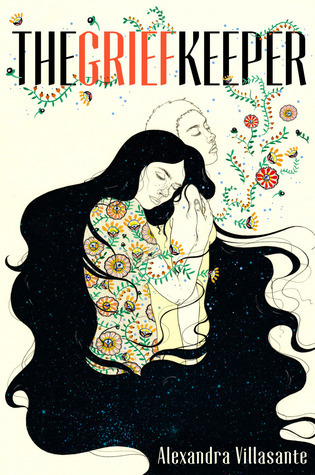
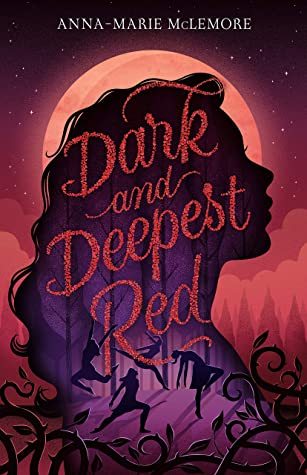
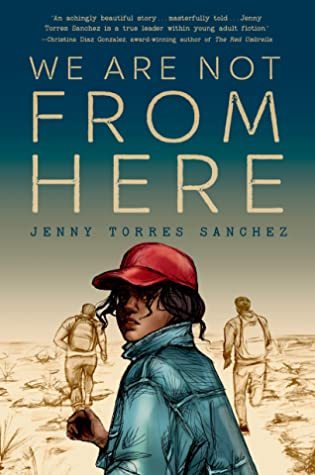
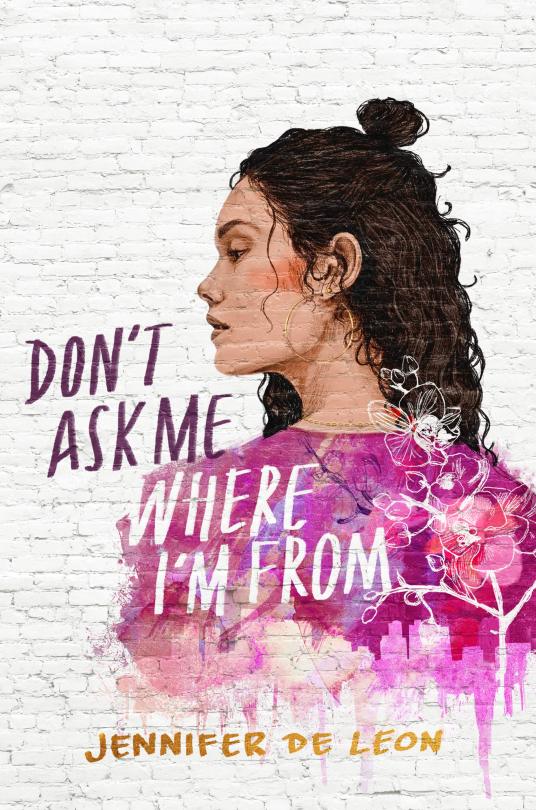
National Hispanic Heritage Month Sept 15-Oct 15: YA/Adult Crossovers to Read
The Grief Keeper by Alexandra Villasante
This stunning YA debut is a timely and heartfelt speculative narrative about healing, faith, and freedom.
Seventeen-year-old Marisol has always dreamed of being American, learning what Americans and the US are like from television and Mrs. Rosen, an elderly expat who had employed Marisol's mother as a maid. When she pictured an American life for herself, she dreamed of a life like Aimee and Amber's, the title characters of her favorite American TV show. She never pictured fleeing her home in El Salvador under threat of death and stealing across the US border as "an illegal", but after her brother is murdered and her younger sister, Gabi's, life is also placed in equal jeopardy, she has no choice, especially because she knows everything is her fault. If she had never fallen for the charms of a beautiful girl named Liliana, Pablo might still be alive, her mother wouldn't be in hiding and she and Gabi wouldn't have been caught crossing the border.
But they have been caught and their asylum request will most certainly be denied. With truly no options remaining, Marisol jumps at an unusual opportunity to stay in the United States. She's asked to become a grief keeper, taking the grief of another into her own body to save a life. It's a risky, experimental study, but if it means Marisol can keep her sister safe, she will risk anything. She just never imagined one of the risks would be falling in love, a love that may even be powerful enough to finally help her face her own crushing grief.
The Grief Keeper is a tender tale that explores the heartbreak and consequences of when both love and human beings are branded illegal.
Dark and Deepest Red by Anna-Marie McLemore
Summer, 1518. A strange sickness sweeps through Strasbourg: women dance in the streets, some until they fall down dead. As rumors of witchcraft spread, suspicion turns toward Lavinia and her family, and Lavinia may have to do the unimaginable to save herself and everyone she loves.
Five centuries later, a pair of red shoes seal to Rosella Oliva’s feet, making her dance uncontrollably. They draw her toward a boy who knows the dancing fever’s history better than anyone: Emil, whose family was blamed for the fever five hundred years ago. But there’s more to what happened in 1518 than even Emil knows, and discovering the truth may decide whether Rosella survives the red shoes.
With McLemore's signature lush prose, Dark and Deepest Red pairs the forbidding magic of a fairy tale with a modern story of passion and betrayal.
We Are Not From Here by Jenny Torres Sanchez
A ripped-from-the-headlines novel of desperation, escape, and survival across the U.S.-Mexico border.
Pulga, Chico, and Pequeña have no false illusions about the town they've grown up in and the dangers that surround them. Though their families--both biological and found--create a warm community for them, threats lurk around every corner. And when those threats become all too real, the three teens know they have no choice but to run: for the border, for the hope of freedom, and for their very lives.
Crossing from Guatemala through Mexico with their eyes on the U.S. border, they follow the route of La Bestia, a system of trains that promise the hope of freedom--if they are lucky enough to survive the harrowing journey. With nothing but the bags on their backs and the desperation that courses through their very veins, Pulga, Chico, and Pequeña know that there's no turning back, dangerous though the road ahead might be.
In this story inspired by real--and current--events, the plight at our southern border is brought to life.
Don't Ask Me Where I'm From by Jennifer De Leon
Fifteen-year-old Liliana is fine, thank you very much. It’s fine that her best friend, Jade, is all caught up in her new boyfriend lately. It’s fine that her inner-city high school is disorganized and underfunded. It’s fine that her father took off again—okay, maybe that isn’t fine, but what is Liliana supposed to do? She’s fifteen! Being left with her increasingly crazy mom? Fine. Her heathen little brothers? Fine, fine, fine. But it turns out Dad did leave one thing behind besides her crazy family. Before he left, he signed Liliana up for a school desegregation program called METCO. And she’s been accepted.
Being accepted into METCO, however, isn’t the same as being accepted at her new school. In her old school, Liliana—half-Guatemalan and half-Salvadorian—was part of the majority where almost everyone was a person of color. But now at Westburg, where almost everyone is white, the struggles of being a minority are unavoidable. It becomes clear that the only way to survive is to lighten up—whiten up. And if Dad signed her up for this program, he wouldn’t have just wanted Liliana to survive, he would have wanted her to thrive. So what if Liliana is now going by Lili? So what if she’s acting like she thinks she’s better than her old friends? It’s not a big deal. It’s fine.
But then she discovers the gutting truth about her father: He’s not on one of his side trips. And it isn’t that he doesn’t want to come home…he can’t. He’s undocumented and he’s been deported back to Guatemala. Soon, nothing is fine, and Lili has to make a choice: She’s done trying to make her white classmates and teachers feel more comfortable. Done changing who she is, denying her culture and where she came from. They want to know where she’s from, what she’s about? Liliana is ready to tell them.
#latinx heritage month#hispanic heritage month#latinx authors#fiction#YA books#young adult#ya books for adults#crossovers#contemporary#to read#tbr#reading recommendations#Book Recommendations#highly recommend#highly rated
5 notes
·
View notes
Photo



I'm trying to find silver linings where I can, and I must say that I'm very hopeful about making significant headway on my TBR pile. Here are three books I'm excited to read this spring:
The Never Tilting World (The Never Tilting World #1) by Rin Chupeco
HarperTeen
Frozen meets Mad Max in this epic teen fantasy duology bursting with star-crossed romance, immortal heroines, and elemental magic, perfect for fans of Furyborn.
Generations of twin goddesses have long ruled Aeon. But seventeen years ago, one sister’s betrayal defied an ancient prophecy and split their world in two. The planet ceased to spin, and a Great Abyss now divides two realms: one cloaked in perpetual night, the other scorched by an unrelenting sun.
While one sister rules Aranth—a frozen city surrounded by a storm-wracked sea —her twin inhabits the sand-locked Golden City. Each goddess has raised a daughter, and each keeps her own secrets about her sister’s betrayal.
But when shadowy forces begin to call their daughters, Odessa and Haidee, back to the site of the Breaking, the two young goddesses —along with a powerful healer from Aranth, and a mouthy desert scavenger —set out on separate journeys across treacherous wastelands, desperate to heal their broken world. No matter the sacrifice it demands.
Dark and Deepest Red by Anna-Marie McLemore
Feiwel & Friends
Summer, 1518. A strange sickness sweeps through Strasbourg: women dance in the streets, some until they fall down dead. As rumors of witchcraft spread, suspicion turns toward Lavinia and her family, and Lavinia may have to do the unimaginable to save herself and everyone she loves.
Five centuries later, a pair of red shoes seal to Rosella Oliva’s feet, making her dance uncontrollably. They draw her toward a boy who knows the dancing fever’s history better than anyone: Emil, whose family was blamed for the fever five hundred years ago. But there’s more to what happened in 1518 than even Emil knows, and discovering the truth may decide whether Rosella survives the red shoes.
With McLemore's signature lush prose, Dark and Deepest Red pairs the forbidding magic of a fairy tale with a modern story of passion and betrayal.
We Unleash the Merciless Storm (We Set the Dark on Fire #2) by Tehlor Kay Mejia
Katherine Tegen Books
In this nail-biting sequel to Tehlor Kay Mejia’s critically acclaimed fantasy novel We Set the Dark on Fire, La Voz operative Carmen is forced to choose between the girl she loves and the success of the rebellion she’s devoted her life to.
Being a part of the resistance group La Voz is an act of devotion and desperation. On the other side of Medio’s border wall, the oppressed class fights for freedom and liberty, sacrificing what little they have to become defenders of the cause.
Carmen Santos is one of La Voz’s best soldiers, taken in when she was an orphaned child and trained to be a cunning spy. She spent years undercover at the Medio School for Girls, but now, with her identity exposed and the island on the brink of civil war, Carmen returns to the only real home she’s ever known: La Voz’s headquarters.
There she must reckon with her beloved leader, who is under the influence of an aggressive new recruit, and with the devastating news that her true love might be the target of an assassination plot. Will Carmen break with her community and save the girl who stole her heart—or fully embrace the ruthless rebel she was always meant to be?
#WeNeedDiverseBooks#the never tilting world#dark and deepest red#we unleash the merciless storm#young adult books
22 notes
·
View notes
Text
Let’s just discuss the Truths in the new Golf It video.

“As unbelievable as this sounds it is 100% true!
During World War II, the crew of the British submarine,
HMS Trident kept a fully grown reindeer
called Pollyanna aboard their vessel for six weeks.
(It was a gift from the USSR Navy.)”
WHAT. THE. HELL.

“The dance fever of 1518 was a month-long plague of inexplicable
dancing in Strasbourg in which hundreds of people danced for about
a month for no apparent reason. Several danced themselves to death.
Bonus Truth: a few months ago I dreamed about this before I even knew it existed!”
#why?#ohmwrecker#daithi de nogla#vanossgaming#moo#terroriser#bigjigglypanda#bbs#golf it#creator needs grammarly because wow#this is terrible
18 notes
·
View notes
Photo

DARK AND DEEPEST RED
by Anna-Marie McLemore
(Feiwel & Friends, 1/14/20)
9781250162748
Add to Goodreads
Purchase from Indiebound
Summer, 1518. A strange sickness sweeps through Strasbourg: women dance in the streets, some until they fall down dead. As rumors of witchcraft spread, suspicion turns toward Lavinia and her family, and Lavinia may have to do the unimaginable to save herself and everyone she loves.
Five centuries later, a pair of red shoes seal to Rosella Oliva’s feet, making her dance uncontrollably. They draw her toward a boy who knows the dancing fever’s history better than anyone: Emil, whose family was blamed for the fever five hundred years ago. But there’s more to what happened in 1518 than even Emil knows, and discovering the truth may decide whether Rosella survives the red shoes.
With McLemore's signature lush prose, Dark and Deepest Red pairs the forbidding magic of a fairy tale with a modern story of passion and betrayal.
#anna marie mclemore#macmillan#feiwel and friends#january 2020#jan 14 2020#historical fantasy#historical#contemporary fantasy#retelling#timezones#red shoes#16th century#1510s#red covers#rachel recommended#anna-marie mclemore#mclemore#dark and deepest red#dark & deepest red#vicky recommended
2 notes
·
View notes